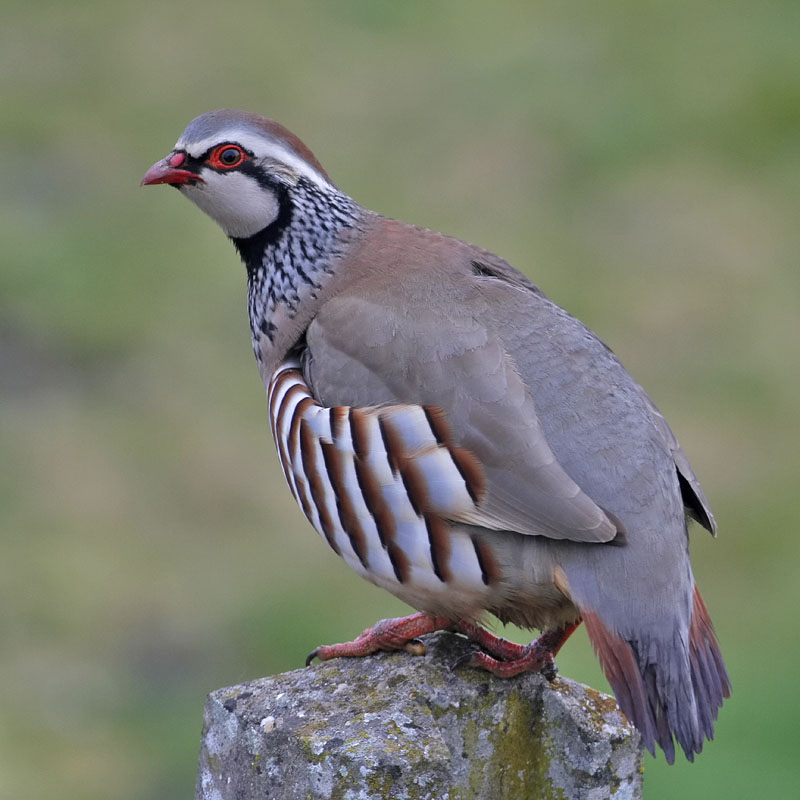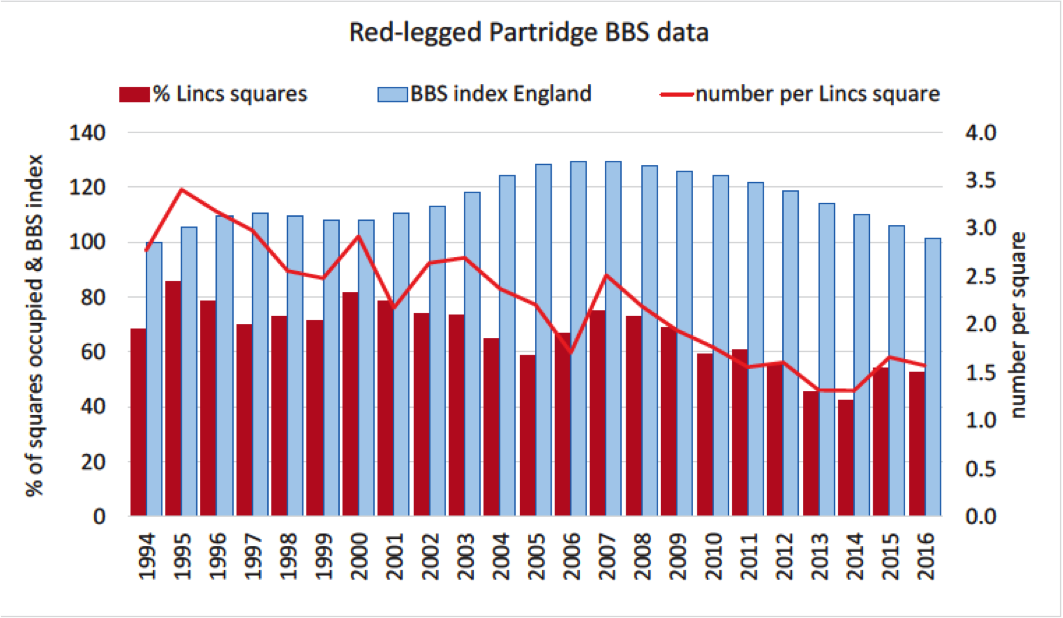Red-legged Partridge Alectoris rufa
A common species of arable farmland, with a resident population augmented each year by releases for shooting.

Red-legged Partridge at Bardney on 5th April 2014; photo courtesy of Russell Hayes.
Various small-scale introductions of this species were attempted from the time of Charles II, with some released near to Windsor in 1673 but these did not persist. It is likely that Red-legged Partridges became established in Britain following its introduction near Orford, Suffolk in 1770 by the Marquis of Hereford. This was a large-scale introduction deriving from eggs imported from France and reared under local chickens (hence its alternative common name of French Partridge). By 1900, breeding had been confirmed in 44 counties in Britain and in 67 during 1968-1972 (Holloway 1996). The dates of the earliest colonists in Lincolnshire seem to have gone unrecorded. By 1874 it was quite common in the south of the county and around the Wash, and by 1889 it was thoroughly established (L&A, 1989).
In a reasonably typical year, records are received from 100-120 sites across the county. For example, in 2016 there were 384 records from about 105 sites with a maximum of 350 at a release site at Hougham on Sept 9th. With many thousands being released on shooting estates every year throughout the county, such records are largely academic. The breeding population in some districts is considered largely stable but the breeding success of released birds is generally considered poor. In the county as a whole, as more widely in England (see chart), the BBS shows a declining population trend. The Lincolnshire data in the chart, while based on a small sample, do however suggest numbers and distribution more than twice that of Grey Partridge. Game-bag data show that, in Britain as a whole, the numbers released per unit area onto shooting estates, and the numbers shot, have both increased more than eightfold since 1980: around 6.5 million birds have been released annually in the UK in recent years. It is not clear how this has affected numbers living and breeding in the wild, although the long-term trend (since the 1960s) may be one of moderate decline (Bird Trends). More recently, the BBS data indicates that a significant increase has taken place, in the UK and England, since 1994 but that trend has reversed since and both nationally and in Lincolnshire the trend shows a gradual decline (see Figure).

Other than through the BBS, there is little systematic coverage of the sort of farmland occupied by Red-legged Partridges. Reports submitted to LBC each year include a few large counts but they show no clear trend, and also do not truly reflect the thousands released annually in the county. Peak annual reports during 1994-2015 have mostly been in the range 50-90, with one higher count of 125 at Blackmoor Bridge in October 2012. Some Chukar x Red-legged Partridge hybrids were reported in the 1990s but none more recently, following their release becoming illegal.
Reference
Holloway, S. (1996). The Historical Atlas of Breeding Birds in Britain & Ireland: 1875-1900. T. & A.D. Poyser (pubs.).
(Account as per new Birds of Lincolnshire (2021), included September 2022)
